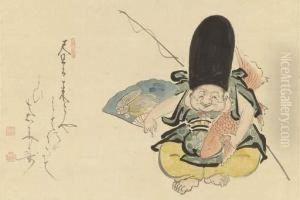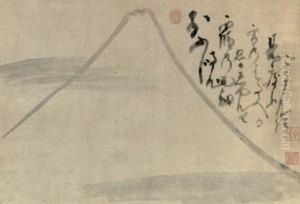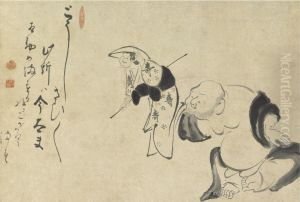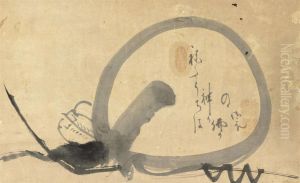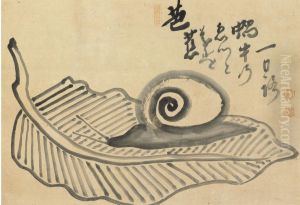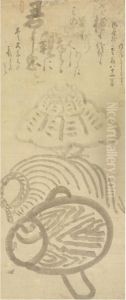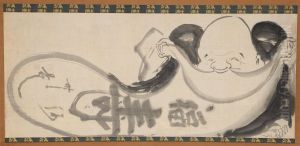Hakuin Ekaku Paintings
Hakuin Ekaku, born in 1686 in Hara, a small village at the foot of Mount Fuji in Japan, is one of the most influential figures in the Rinzai school of Zen Buddhism. He is often credited with revitalizing the Rinzai school, emphasizing the importance of koan practice—a form of meditation using paradoxical questions or statements to provoke deeper insight. His teachings and methods reformed Rinzai Zen and had a profound impact on the practice of Zen in Japan, influencing generations of practitioners and the overall approach to Zen practice.
Hakuin's early life was marked by a profound existential crisis, triggered by a sermon he heard about the fires of hell, which led him to a deep fear of damnation. This fear drove him to seek enlightenment through Zen Buddhism, embarking on a rigorous spiritual quest. He studied under several masters but found his great breakthrough while studying with a hermit monk, Shoju Rojin, who became his primary teacher.
Throughout his life, Hakuin developed and refined his teachings and methods, including the famous 'koan' of the sound of one hand. He also introduced a rigorous system of meditation and ethical conduct for monks, emphasizing the importance of hard work and service in the monastic life. Hakuin was also a prolific writer and artist, using calligraphy and painting to express his spiritual insights. His artworks are still highly valued and appreciated for their depth and spiritual significance.
Hakuin's impact on Zen Buddhism was profound. He not only revitalized the Rinzai school but also influenced the Soto school and Zen practice worldwide. His emphasis on koan practice and the importance of a genuine awakening experience have become central elements of Rinzai Zen. Hakuin's legacy includes not only his teachings and methods but also a lineage of Zen masters who continued his approach to Zen practice.
Hakuin Ekaku passed away in 1769, but his teachings and influence continue to resonate in the Zen community and beyond. His life and work remain a beacon for those on the spiritual path, embodying the relentless pursuit of enlightenment and the integration of spiritual practice with daily life.
